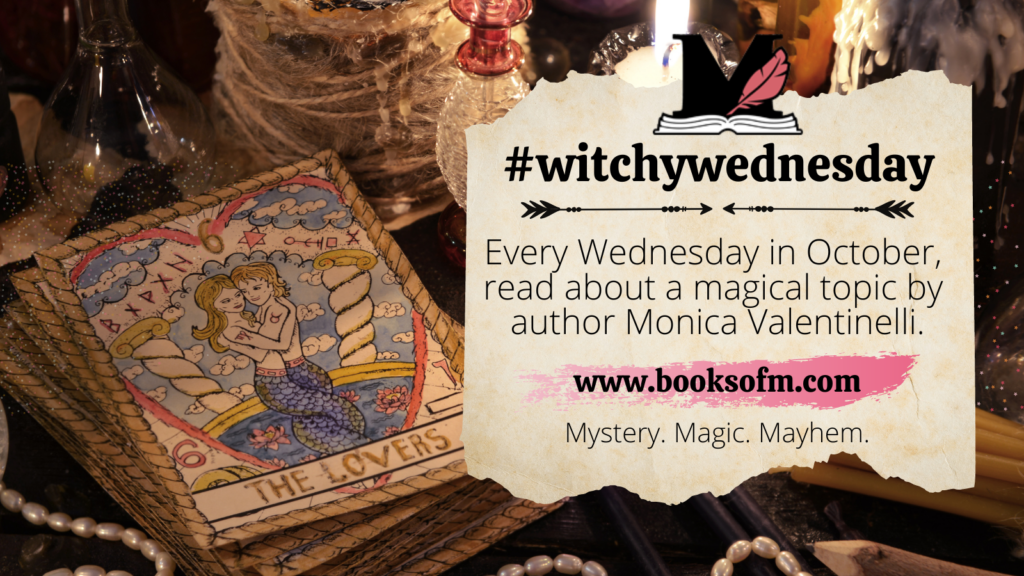Origins of Modern Tarot for Witchy Wednesday
Posted on October 2, 2024 by Monica Valentinelli
To celebrate Halloween this year, I’m partipating in #WitchyWednesday to highlight different subjects in magic. Today, I’m diving into tarot.
Tarot’s origins are often conflated with medieval card games, like Minchiate, Tarocchi, and early poker decks, because there’s some similarities in the card art and design. There are, however, three distinct pieces within tarot’s history: the cards, their modern usage for divination, and how they intersect with story.
What’s often confusing to people who don’t read tarot cards, is that modern tarot has multiple uses. This is partly because the cards were initially designed to tell stories and not to divine fortunes. Minchiate, according to Lo Scarabeo, was a popular storytelling game in Italy amongst the working class, but has now been recontextualized for tarot in some circles. When combined with the early Tarocchi game, the two card games form the basis of the card art and design for modern tarot. But to understand how tarot proceeded to become a source for divination, we have to travel from working class Italy to visit an ingenious bookseller in France.
Marie Lenormand, during the Napoleonic era, is widely credited as the cartomancer who linked tarot with divination. During the 18th century, she read tarot for many historic and notable figures, including Napoleon, shifting tarot card readings from storytelling to the more intimate divinatory style. Her prominence was so widely-recognized that, after she passed, several decks were named and designed to honor her. Lenormand teaches us that there’s a lot of power in personal stories! She managed to navigate those waters for over 40 years to various effects.
Marie Lenormand’s influence occured on the cusp of modern occultism. Often, however, the Rider-Waite-Smith and Thoth decks are perceived as the icons of modern tarot and all other decks are either inspired by or are drawn from them.
Let’s start with Rider-Waite-Smith, which was published in 1909. The name Rider refers to the publisher at the time; Waite references A. E. Waite, the mystic who designed the cards, and Smith refers to Pamela Coleman Smith, the artist. Rider-Waite-Smith is a deck that reinvents tarot for modern usage by drawing on the Italian decks, which included Christian iconography, astrology (also found in the Minchiate deck), and Waite’s guidance from his involvement with the Order of the Golden Dawn.
The Thoth tarot (1944) is directly tied to Aleister Crowley, who was also a member of the Order of the Golden Dawn, and illustrated by Lady Frieda Harris. This deck is attributed to the Kabbalah’s influences. It is pretty “dense,” divination-wise, and is more esoteric than Rider-Waite-Smith.
Despite the two examples, the dominant influence is the Rider-Waite-Smith deck due to advances in card printing and the interest in mysticism at the time. The mechanics of mass producing cards enabled a larger print run and distribution to multiple countries. That broad distribution kicked off interest in tarot and established the deck as a contemporary baseline that anyone could use regardless of class.
The popularity of tarot waxes and wanes, but it does persist. Most notably, tarot was popular in the 1970s and coincided with the rise of second wave feminism, then again in the late 80s and 90s, and today. Tarot remains prominent, however, not just because of Rider-Waite-Smith’s popularity, but because tarot as a concept is not exclusive to that deck.
Anyone can read or create their own tarot cards and their own book. Because of this, the popularity of tarot is not only guaranteed, it will continue to evolve to reflect contemporary themes and artistic styles. Now, we can even enjoy a new take on RWS–like The Modern Witch tarot!
Thank you for reading today’s post. If you like what you read, you can buy me a coffee, suggest an upcoming topic, or check out my newsletter.
‘Til next time!


